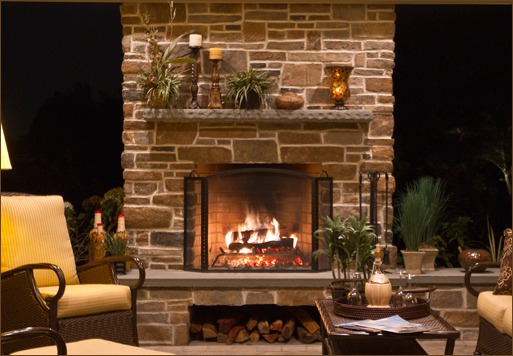The United States Environmental Protection Agency (EPA) estimates that existing wood-burning fireplaces emit, on average, 12 grams of fine particulate per kilogram of fuel burned. Phase 2 Qualified fireplaces under the EPA’s Voluntary Fireplace Program emit 5.1 g/kg or less, an emission reduction of more than 70 percent. To date, seven manufacturers have qualified 14 fireplaces with emission levels varying from 0.68 to 4.8 g/kg. Qualified fireplaces include those of all types of construction, including manufactured metal fireplaces, modular masonry and a site-built, brick-and-cinder block, masonry fireplace.
According to the EPA, wood smoke emissions pose significant health risks. The construction and use of EPA-Qualified fireplaces can reduce the health risks of wood smoke emissions.
Established in 2009, the EPA’s Wood-Burning Fireplace Partnership Program promotes the manufacture and sale of cleaner wood-burning fireplaces instead of other wood-burning fireplace models. The program was undertaken to encourage the development and sale of a new generation of lower-emitting fireplaces that burn cord wood.
How It Works
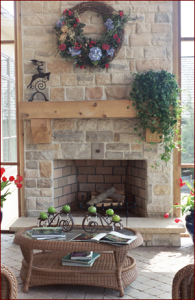
Voluntarily, manufacturers desiring to participate in the program sign a partnership agreement with the EPA, indicating the manufacturers’ interest in developing a cleaner burning fireplace. When a new, cleaner burning fireplace model is developed, emission test reports are compiled with data gathered from independent testing facilities, and then submitted to the EPA for review. The submitted information is reviewed and, if accepted, the fireplace is added to the Phase 2 Qualified fireplace list.
Emissions are tested under ASTM E-2558, the industry standard for particulate emission testing of wood-burning fireplaces.
The intent of the Voluntary Fireplace Program is to reduce wood smoke emissions from fireplaces more quickly than what could be achieved through federal regulation.
In 2010, and in the opening months of 2011, it was expected that federal regulation would be used to reduce wood smoke emissions through the inclusion of wood-burning fireplaces in the Federal New Source Performance Standard (NSPS) revision. However, with input from industry representatives and the Hearth Patio and Barbecue Association, the EPA ultimately decided, in spring 2011, to exclude wood-burning fireplaces from the NSPS. Had they been included, the construction and installation of new fireplaces, nationwide, would have been limited to those meeting established emission standards.
Though now not included in the standard, wood-burning fireplaces still may contribute to non-attainment of air quality goals in certain regions of the country. These regions, once predominantly or exclusively in Western states, now are found throughout the country, including, but not limited to, areas of the Midwest and New England states. Construction of EPA Phase 2 Qualified Fireplaces instead of the construction of conventional fireplaces can help reduce the health risks of wood smoke emissions from new fireplaces.
Air quality districts across the country are tasked with achieving air quality goals. The methods used to achieve those goals are left to the discretion of the district. With regard to wood-burning fireplaces, some districts have developed their own emission standards and, in some instances, banned the construction or installation of new fireplaces completely.
The establishment of the EPA-Qualified Wood-Burning Fireplace Program creates a framework that may be adopted by air quality districts faced with non-attainment of air quality goals. Districts may introduce more stringent regulations. But, with the EPA program in place, it is hoped that those areas faced with the necessity of reducing wood smoke emissions will look first to the existing voluntary program.
Why It Matters
Why should this be of importance to mason contractors, especially considering that wood-burning fireplaces are not being restricted under the revised Federal NSPS?
Areas in many regions of the country are facing added pressure to improve air quality. Wood smoke is a contributor to degraded air quality, and its elimination or reduction is being considered as one tool to meet this added pressure. Outright bans of the construction or installation of new, wood-burning fireplaces is one method that could be used to reduce wood smoke emissions.
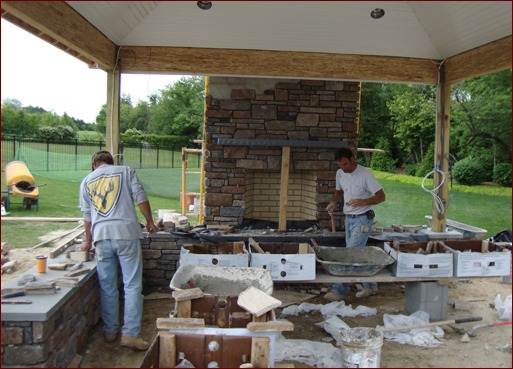
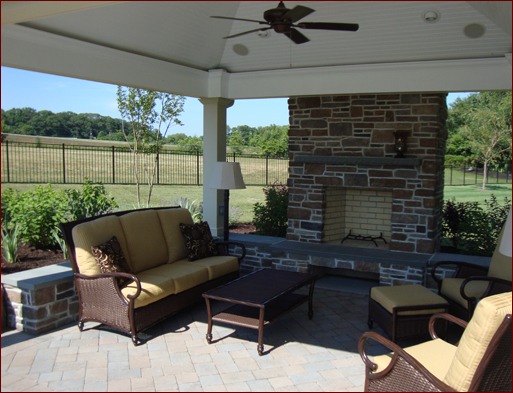
Mason contractors who build fireplaces, masonry dealers who sell blocks, bricks and other fireplace components, and manufacturers who produce the same items suffer when regulation prevents the construction of new masonry fireplaces.
The adoption by air quality districts of the EPA program will restrict, but not eliminate, the construction of new fireplaces. Included in the Phase 2 Qualified fireplace list is a site-built, cinder block-and-brick masonry fireplace. Its inclusion means that mason contractors, dealers and manufacturers may continue to participate in new fireplace construction, even as emission standards expand to new areas across the country.
The Whitacre Greer MFR-100 Series fireplace is a site-built, EPA Phase 2 Qualified fireplace with tested emissions of 4.3 g/kg. It uses Clear Skies Unlimited catalytic technology to exceed the emission standard. The technology is completely passive. It requires no external power and is invisible to the homeowner. MFR-100 Series fireplaces are constructed with cinder blocks, firebricks, refractory mortar and a clay flue liner, purchased from local masonry dealers.
A list of EPA Phase 2 Qualified fireplaces and links to air quality agencies throughout the United States are on the EPA Burn Wise website.
| Product Watch |
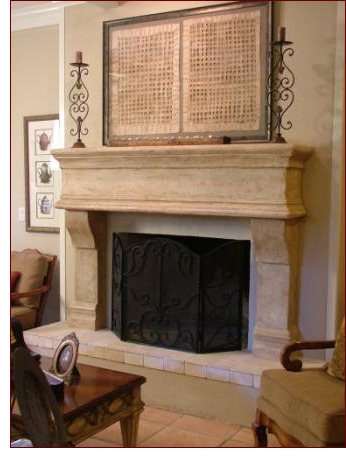 For contractors, installing a cast stone fireplace in a residence, condo or apartment building can present so many labor and material costs – not to mention installation issues – that it can scuttle a job completely before it even begins. For contractors, installing a cast stone fireplace in a residence, condo or apartment building can present so many labor and material costs – not to mention installation issues – that it can scuttle a job completely before it even begins.
In one way or another, the difficulties behind cast stone surrounds stem from its sheer weight. A cast stone mantel and surround can weigh up to 1 ton. Shipping alone for a surround of this size can cost $800 or more, in addition to the cost of the product itself. Also, given the product’s weight, floors and walls often require additional structural support, driving up installation time and costs. In fact, structural issues can eliminate effectively cast stone surrounds as an option for any floor higher than the first, and for most apartment or condo units. The weight of cast stone also is a factor in the actual installation. Contractors must use lifting equipment to bring the material indoors and during installation, and employ multiple helpers. All totaled, a cast stone surround installation can take up to two days. Fortunately, a new option on the market that takes a lot of the cost, weight and installation time out of such a project exists. To be more exact, installing a stone surround can take as little as one hour, with a single helper, no structural reinforcements, using only a level, caulking gun, a sponge and, perhaps. some shims. The solution is a lightweight product that has the look and feel of real stone, but isn’t as heavy as solid cast stone. To be more exact, the product, from San Antonio-based Mission Stone, involves a layer of cast limestone cement over a lightweight Styrofoam core, giving the look and feel of solid cast stone without the weight, the price or installation requirements. Mission Stone uses actual stone, but just on the surface of the product. A half-inch-thick layer of limestone cement is hand cast around the foam core and, subsequently, hand-polished with a grinder to give it the look and feel of real cast stone. At that point, the surface presents a white color, but various water-based stains can be applied to provide different color variations, including custom finishes. Perhaps most important, the fireplace surround with its foam core greatly reduces the weight from about 2,000 pounds for cast stone to only 200 pounds, for the average mantel and two legs. The legs and mantel are first “dry-fit” to the wall, and their positions are marked in pencil. The pieces then are removed, so that the adhesive can be applied, after which they are pressed firmly back into place. Once the adhesive is dry, a 1/8-inch bead of caulk is applied where the mantel and legs meet the wall. Wiping everything down with a clean damp sponge finishes the job. If time is money, foam-core technology also saves when it comes to manufacturing lead times. A cast solid stone order can require anywhere from six to eight weeks to fill. A foam-core order takes three to four weeks to fill – a notable time savings. For more information, visit www.missionstone.com. |
